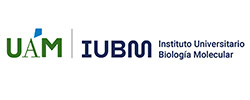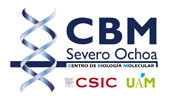Calcium signaling in mitochondria: metabolic control and mitochondrial physiopathology
Prof. Jorgina Satrústegui. Profesora Emérita. Departamento de Biología Molecular. UAM.
Prof. José Mª Carrascosa Baeza. Catedrático. Departamento de Biología Molecular. UAM.
Prof. Beatriz Pardo. Profesora Titular Departamento de Biología Molecular. UAM.
Prof. Araceli del Arco. Profesora Titular Universidad de Castilla-La Mancha.
Prof. Laura Contreras Balsa. Profesora Permanente Laboral. Departamento de Biología Molecular. UAM.
Our interests are understanding calcium regulation of mitochondrial function by way of the calcium-dependent mitochondrial carriers of aspartate-glutamate/AGCs (Aralar/AGC1 and citrin/AGC2), components of the malate aspartate shuttle (MAS), or ATP-Mg2+/Pi carriers (SCaMCs). These carriers have Ca2+-binding motifs facing the intermembrane space and are not activated by matrix calcium. We also aim at learning the role of these carriers in health and disease.
In neurons, calcium is thought to regulate neuronal activation, by adjusting ATP production to ATP consumption. This occurs thanks to stimulation of glycolysis and OXPHOS. The mitochondrial calcium uniporter (MCU) was thought to play a major role by increasing mitochondrial calcium and OXPHOS in response to activation. We have tested this possibility in neurons using glucose and have found that MCU is dispensable for the increase in respiration in response to neuronal stimulation. Instead, using intracellular sensors of glucose, pyruvate and lactate, we find that Aralar-MAS is required to stimulate glycolysis, pyruvate production and respiration, revealing a calcium dependent mechanism essential to boost glycolysis and respiration in neurons using glucose.
In humans, Aralar/AGC1 deficiency is a rare disease presenting neurological and muscular affectation. Postnatal hypomyelination, epilepsy, hypotonia and delayed neurodevelopment are the main traits in patients. Global Aralar-KO mice have a short lifespan and well recapitulates the human phenotype. Our main interest is focused on deciphering the physiopathological role of Aralar/AGC1 in specific brain cell types and in muscle. To face these issues, we have generated oligodendroglial- and neuron-specific Aralar-KO mice. To answer relevant questions as: (a) the role of neuronal Aralar in the severe phenotype of the global Aralar-KO mice (b) the involvement of muscular- and neuronal-Aralar in motor coordination deficits and hypotonia, or (c) the contribution of oligodendroglial and neuronal Aralar to postnatal myelination, and demyelination-remyelination processes.
Citrin deficiency is an urea cycle disorder with different manifestations. Citrin/AGC2 is mainly expressed in liver and main clinical symptoms are hypoglycemia, hyperammonemia and dyslipidemia. In the frame of the Citrin Foundation, we are exploring i) the exogenous expression of Aralar, which has low expression in human liver, as possible therapy for Citrin deficiency and ii) the role of citrin/AGC2 in liver in the mitochondrial response to Ca2+ mobilizing agonists and its impact in liver metabolism. For that purpose, we will generate cellular and transgenic mouse models to better recapitulate the human disease.
As part of a COVID-19 project (CvK), a therapy targeting senescent cells, was shown to reduce mortality and morbidity induced by SARS CoV 2 in the transgenic animal models used.


